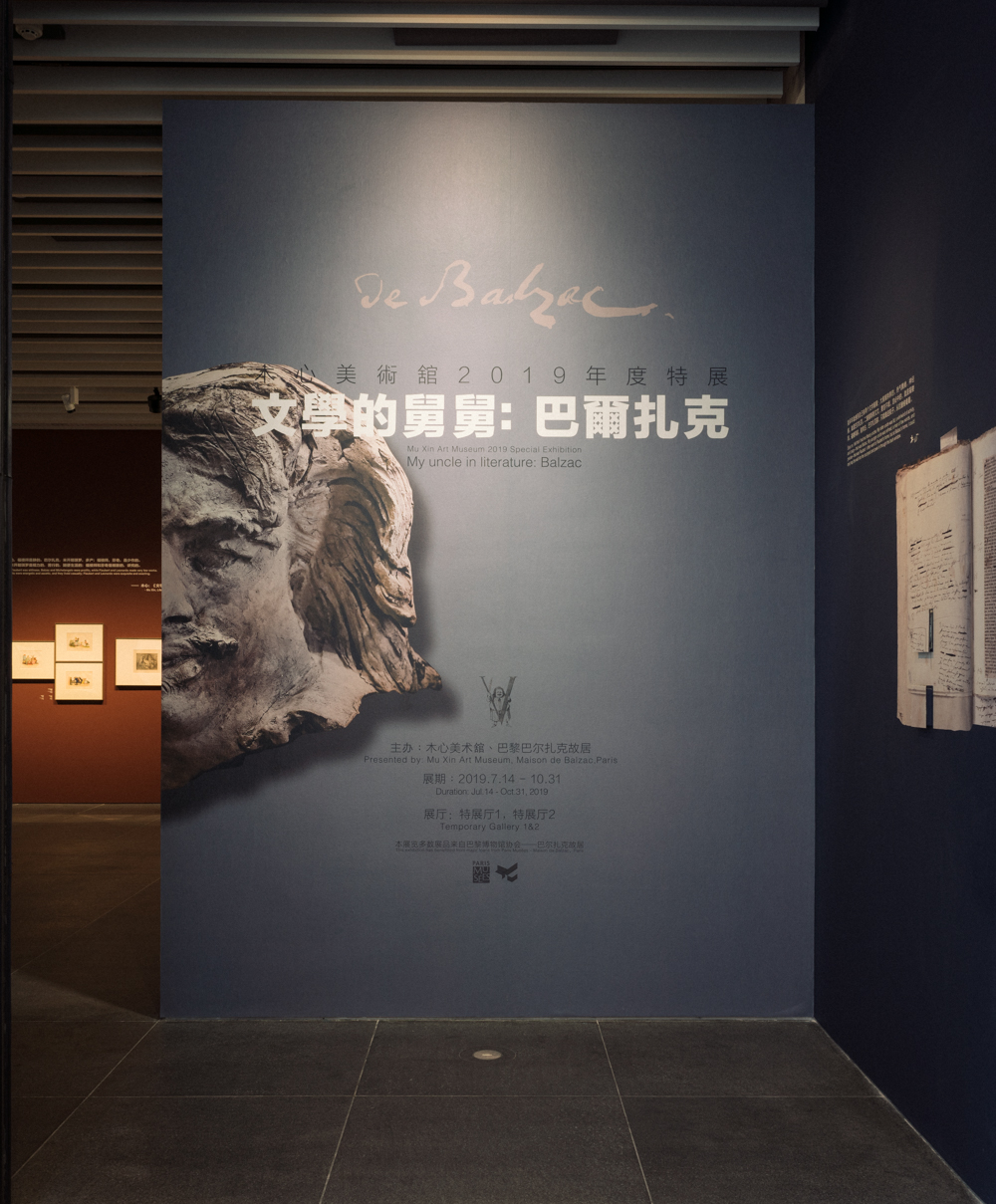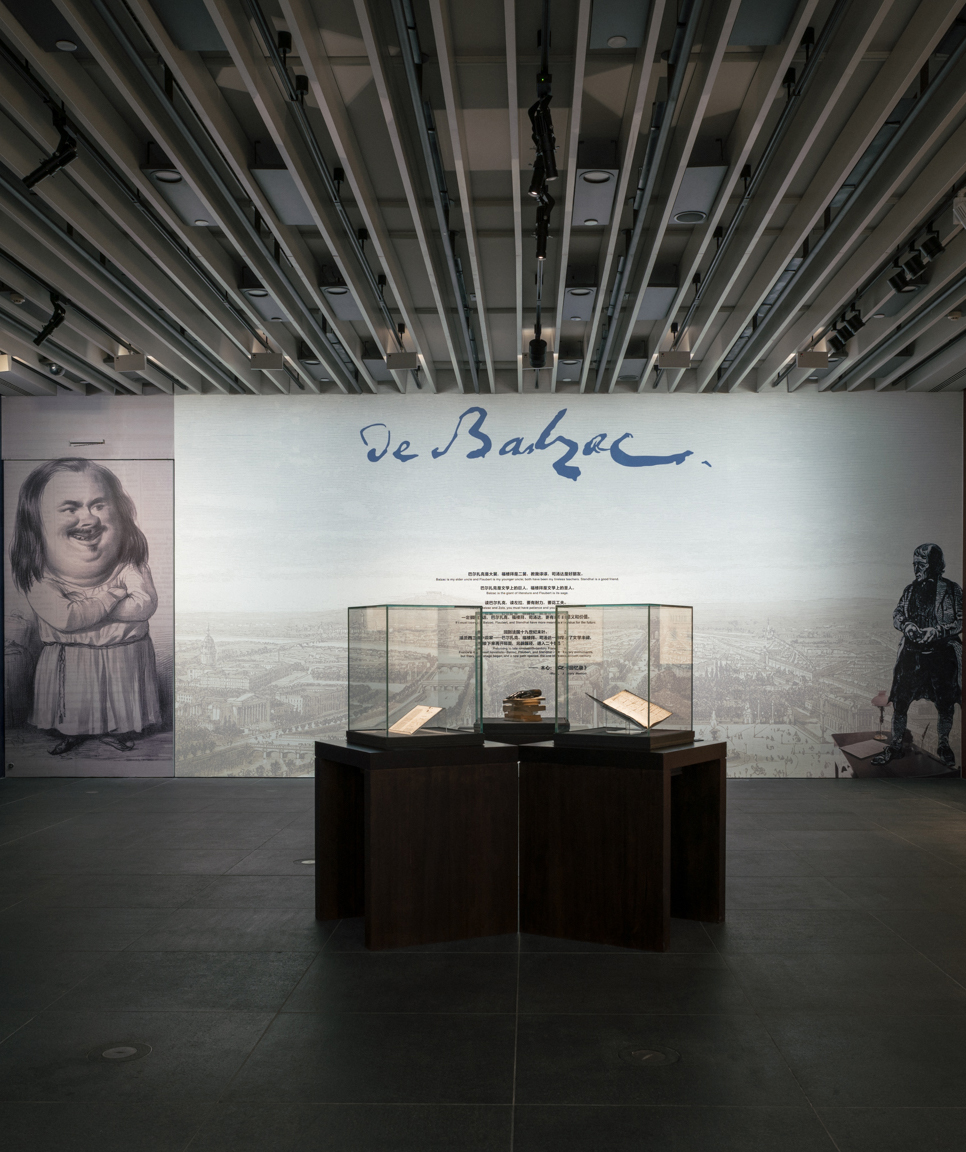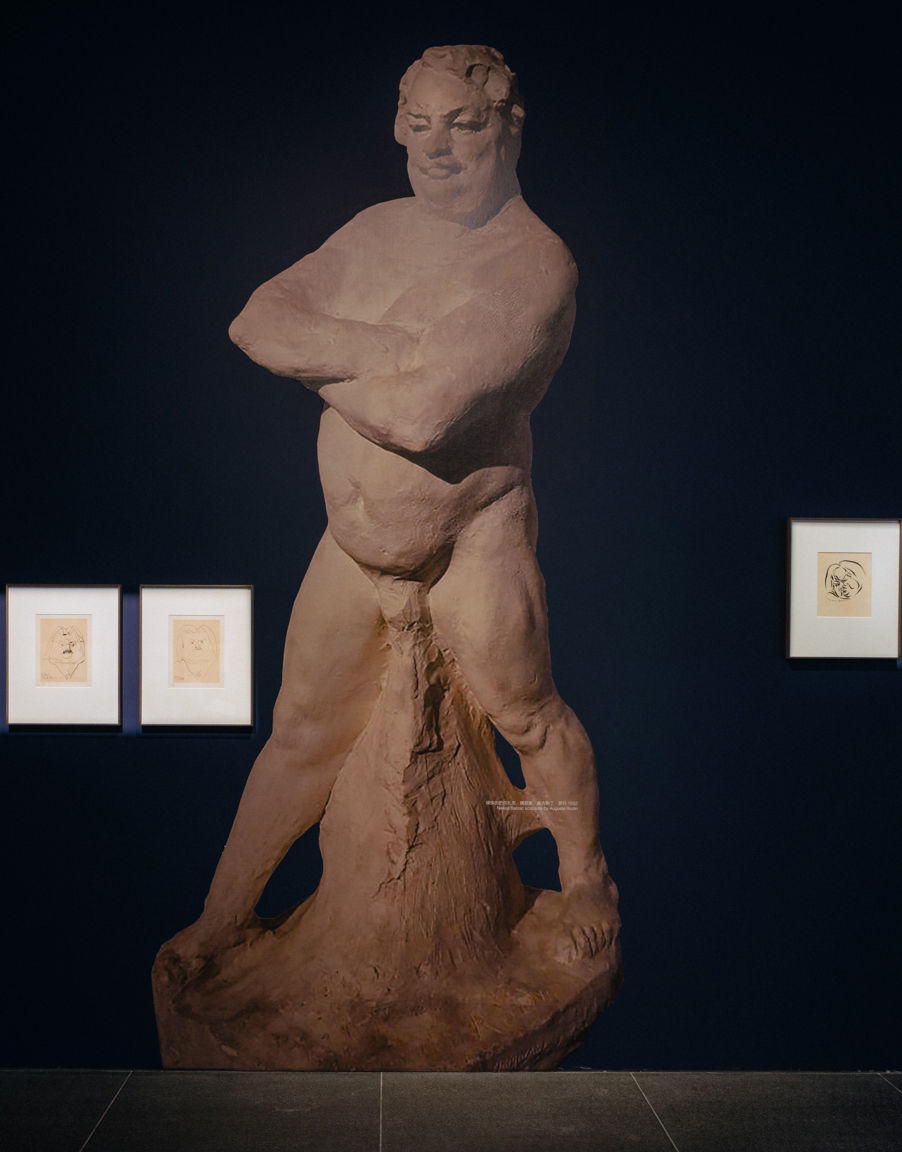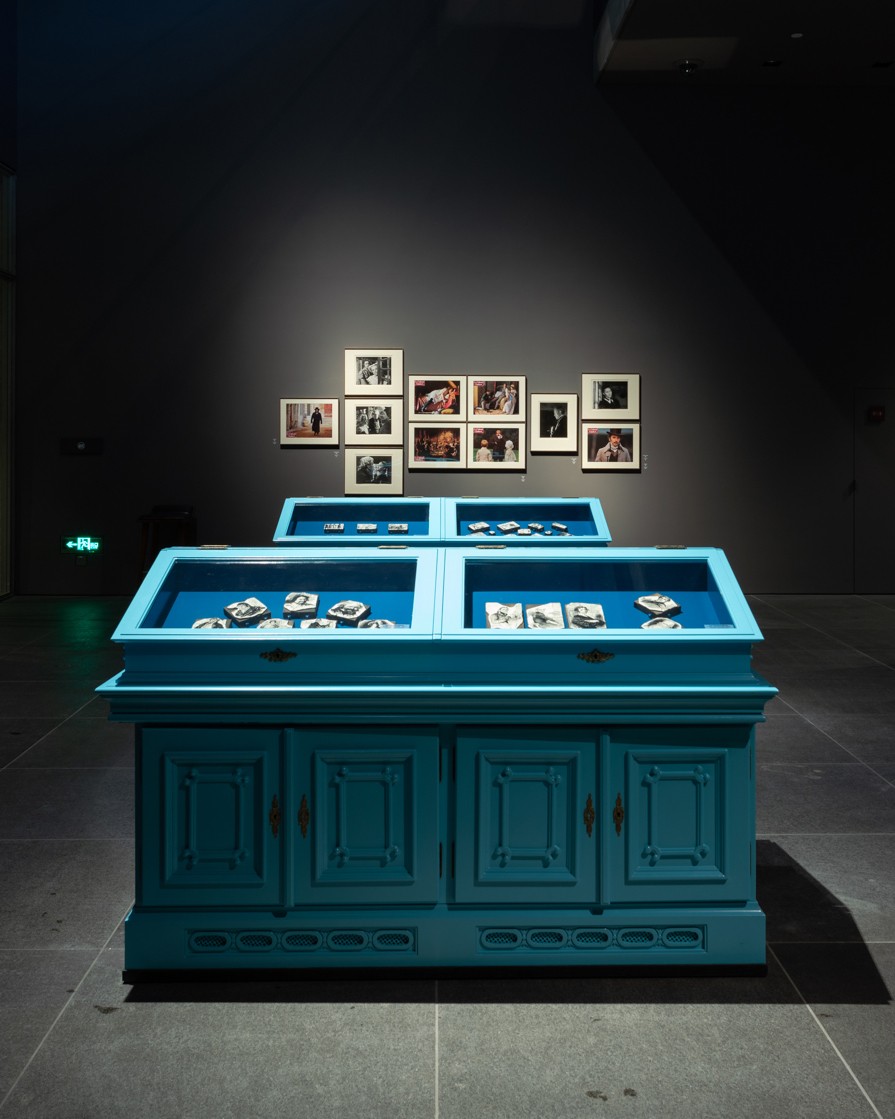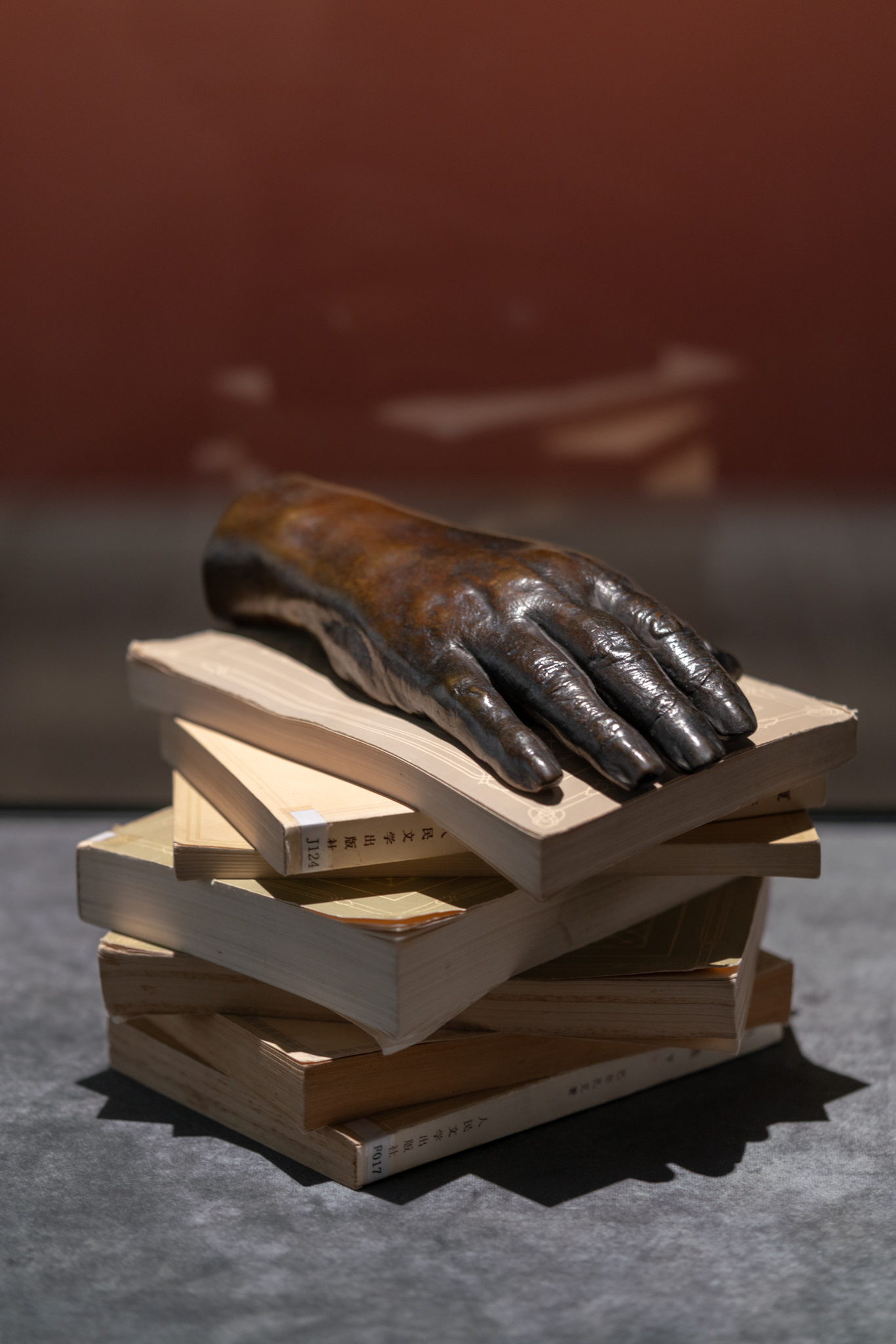Duration: July 14, 2019 - October 31, 2019
Venue: B1F, Temporary Gallery
Organizers:Mu Xin Art Museum、Maison de Balzac,Paris
When Mu Xin said, “Balzac is my uncle,” he was speaking about the affectionate distance between Chinese readers and European literature; countless characters from nineteenth-century French novels have “lived” in twentieth-century China. They have been companions to readers from Mu Xin to us, slowly becoming like family.
Of course,Le Père Goriotand Eugénie Grandethave been translated into Chinese. In any discussion of Balzac, we must not forget the great Fu Lei. As a translator, Balzac represented Fu’s ambition and redemption in middle age, and the nature of Fu Lei’s end makes us realize that some are unaware of the writing of this master of insight into human nature.
Today, countless young Chinese are going to Paris or have been to Paris. Mu Xin and others of our generation could envision France through Stendhal, Flaubert, Daudet, and especially Balzac. In the late 1940s, Mu Xin wept at André Gide’s passing, and he lamented that he never had the opportunity to study in Paris. He died never having visited France, and now, his literary uncle’s manuscripts, ephemera, and a mold of his hands are coming to his hometown.
Nineteenth-century French writers have been good and old friends to the Chinese people. After more than twenty years, cultural exchange between China and France has far surpassed the imaginations of generations of enthusiastic readers. We would like to thank Mr. Yves Gagneux, the director of the Maison de Balzac, for carefully selecting the exhibits in this show.
Chen Danqing
Mu Xin Art Museum
Renovations have just been completed on the Maison de Balzac, located in Village de Passy, an area of Paris just across the Seine from the Eiffel Tower. The exhibition “Balzac, My Uncle in Literature” reflects Mu Xin’s reading of Balzac, but it also represents the spirit of this Parisian museum.
Many portraits, both serious and caricatured, have preserved Balzac’s spirit for us, particularly his round figure and defiant personality. The Human Comedyhas a timeless power, and after Balzac’s death, great artists such as Auguste Rodin, Pablo Picasso, and Albert Marquet took an interest in the novelist. Plays, comics, and films have all drawn inspiration from Balzac. More than 150 films have been based on his novels!
Balzac’s work is the result of perfectionism; the repeated changes on his manuscripts and the many printing proofs bear witness to this. This work ethic is a model for artists today.
The Human Comedy represents a body of thought that is unparalleled. Cartoonists sometimes humorously captured the lifestyles of their contemporaries; Lami depicted the neat and graceful lives of aristocrats, Traviès and Daumier caricatured the ordinary people of Paris, and Henri Monnier mocked the bourgeoisie. Balzac portrayed society in its entirety and described its mechanisms. He explained the social functions of the individual in society, just as naturalists described and classified the plant and animal worlds in the eighteenth century.
Balzac created 2,500 characters, some well-known like Eugenie Grandet or Rastignac, and others unexpected like the angel Seraphita, from places ranging from Egypt to Norway, from Spain to Java.
Balzac proposed a model for analyzing social relationships, which was as important for yesterday’s France as it is to the world today. He was born in France, but he now belongs to his readers, and isn’t China the country with the most readers of Balzac?
Yves Gagneux
Maison de Balzac




